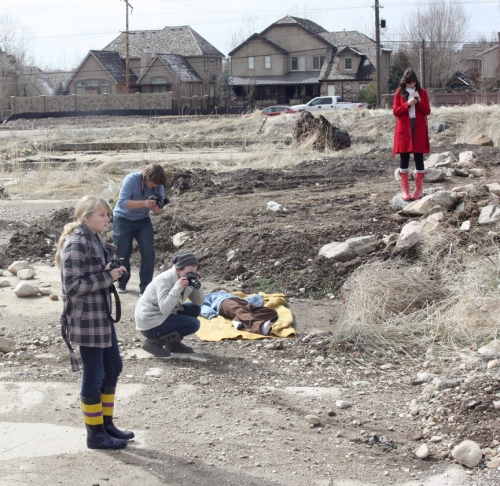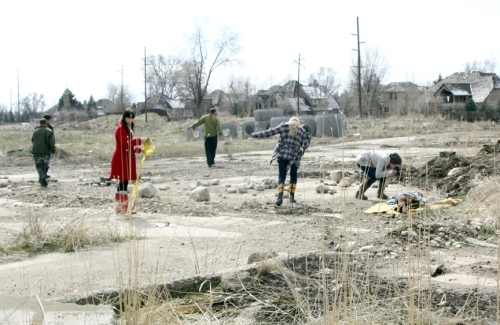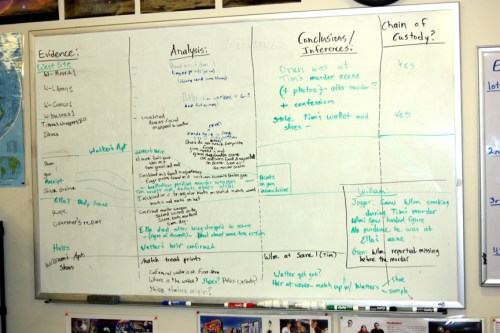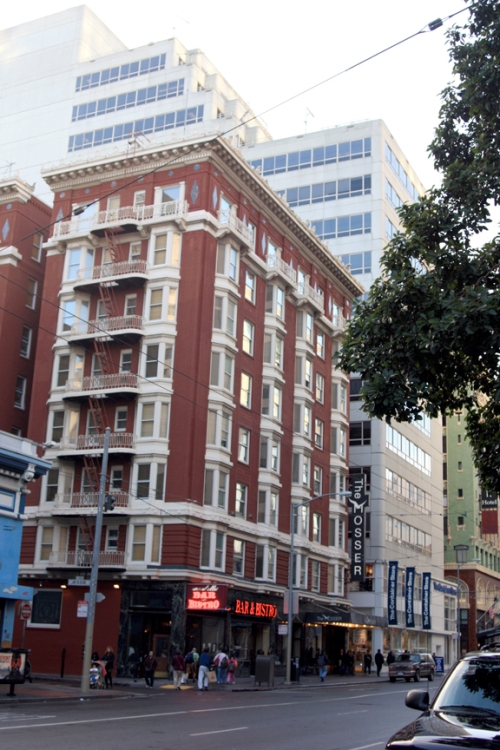My trip to the NSTA conference in San Francisco came right in the middle of our Intersession period at Walden School of Liberal Arts. The most difficult time of the school year is the stretch from Presidents’ Day through Spring Break. The weather is still too nasty in Utah to do very much outside, and so most students (and teachers) get a little stir crazy with cabin fever. I call this period of time “The Doldrums.”
At Walden School, we break out of the doldrums by putting a two-week Intersession period at the end of the third term, with specialty classes that are high-interest and out of the ordinary. I teamed up with Eric Beecroft, our social science teacher, to create a Crime Scene Investigation (CSI) class that combined parts forensic science, criminology, psychology, and electronic data collection.
We started on Monday, March 7 with a general class meeting to go over the requirements, set up teams, and train them in group communication skills. I used an exercise I had written up years ago while a master’s student in organizational behavior at Brigham Young University (I’ve been through a few career changes). It has groups of six students solve a murder mystery aboard the Carob Bean Queen. Each student receives a sheet of paper that has a description of the crime and suspects, but what they don’t know is that each paper is slightly different and has information that will clear one suspect. The only way to solve the crime is to cooperate and communicate as a group to pool their information.
On the second day, we had a volunteer made up to look like a dead body and I planted evidence in a field just south of our school. It had snowed the night before, but this day the sun came out and melted the snow, leaving ideal conditions for footprints. I carefully set up the evidence, with various shoes used to represent the suspects. I had another student dress up as a homeless person pulling a cart through the field (to leave some unusual tracks). We planted fake ID cards, bullet casings, hair and fiber samples, and I even had the butcher at a local supermarket same me some beef blood which I splashed liberally around the scene (so we could test for blood using hydrogen peroxide).
While I was planting the evidence, the students were watching a presentation by the medical examiner’s office. She brought slides. After she was done, the students came out in groups (the lead detectives and photographers first) to document, collect, and catalog the evidence. We even did plaster casts of some of the footprints, although a batch of plaster was ruined because the students let it set up too much before trying to pour it into the footprints. Despite our warning to watch where they walked, most of my carefully laid footprints were trampled by the investigators. They could have solved the crime just by carefully looking at the footprints and drag marks, but fortunately we had other lines of evidence. As it was, it took them a couple of days to realize that there was a missing person in addition to the dead body. The second victim was finally “found” some distance away on Friday.
On Wednesday, the analysis of the evidence began as they looked at hair and fibers under the microscopes and started testing for blood, checking fingerprints and lip prints, and trying to put it all together. Meanwhile, other teams were looking at paper evidence (ID cards and documents) and electronic evidence. We had even created fake Facebook accounts, travel tickets, bank records, etc. Most of this was to point to various suspects and leave some red herrings to confuse the issue. Those suspects were brought in on Wednesday and Thursday for interviews and fingerprinting. I had to leave after an hour on Wednesday because I had to get to the airport for the NSTA conference.
On Monday, once I returned to Utah, we finished analyzing the evidence and I made sure the students understood the ideas of criminology and burden of proof, such as motive, means, and opportunity as well as keeping a tight chain of custody of evidence. Some evidence had to be thrown out because it had not been put away properly while I was gone. On Tuesday we summarized our findings, recommended a suspect be arrested, held a mock arraignment for that suspect, and tested the students on their participation.
If I were to rate this, my first attempt to teach a forensic science class, I would have to say it went well. Some of the students weren’t as helpful or worked as hard as they could have (they had to be told what to do and where to go instead of taking initiative). We had less of this than I feared we would, due mostly to setting up careful roles and team memberships at the beginning and choosing some responsible students as Lead Detectives, who could then keep the other students focused. Our greatest problem was that the students worked out the culprit too quickly and we had to throw out some additional evidence to keep them guessing. The comments I’ve heard since are that the students had fun and enjoyed the activity. We had a fairly large group for Walden (about 22 students in both junior high and high school) so it was a challenge to have meaningful tasks for all of them all of the time.
I think this went well enough, and there was enough science and analysis involved, that I might try to teach a whole semester course in forensic science at some future time.







